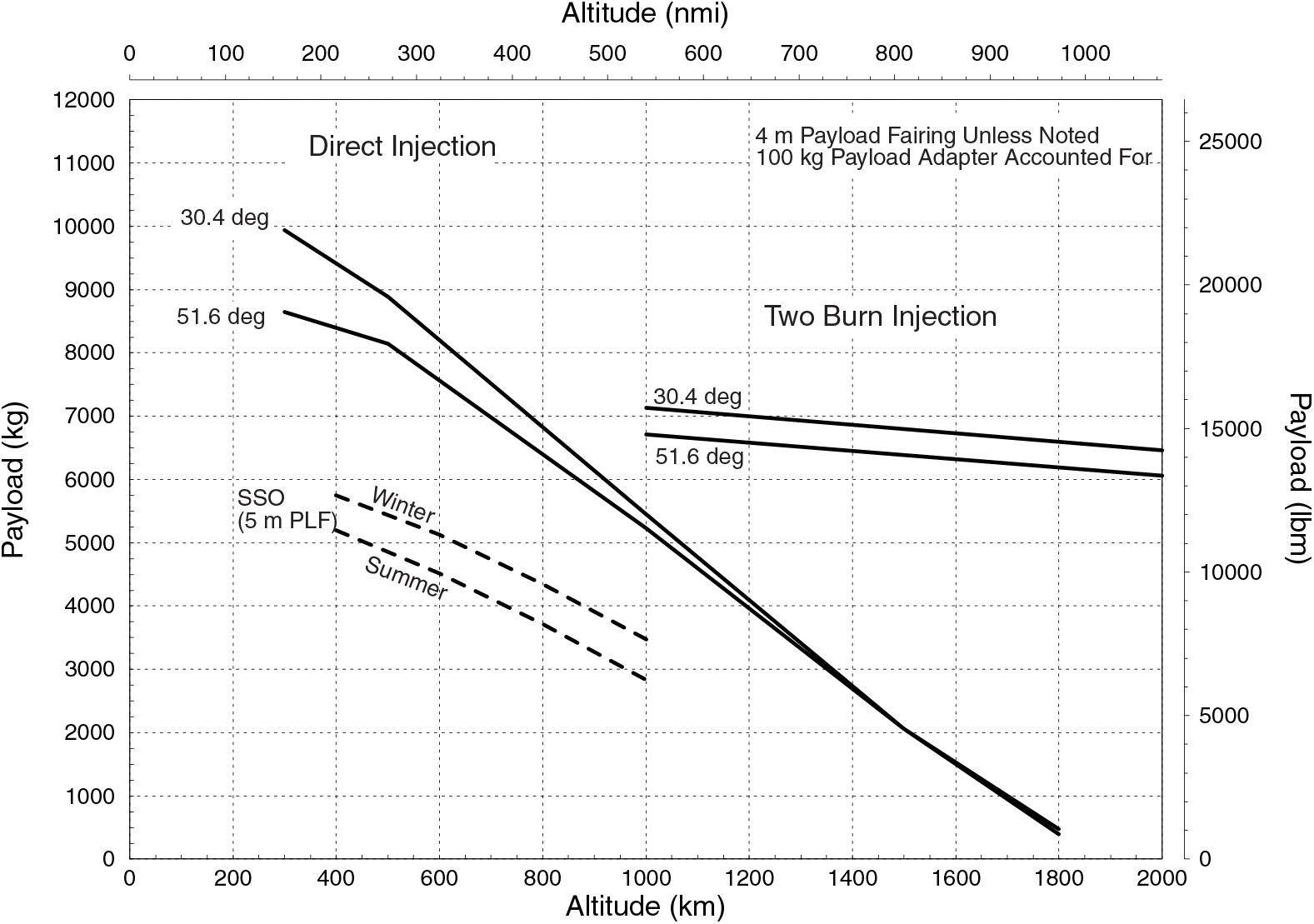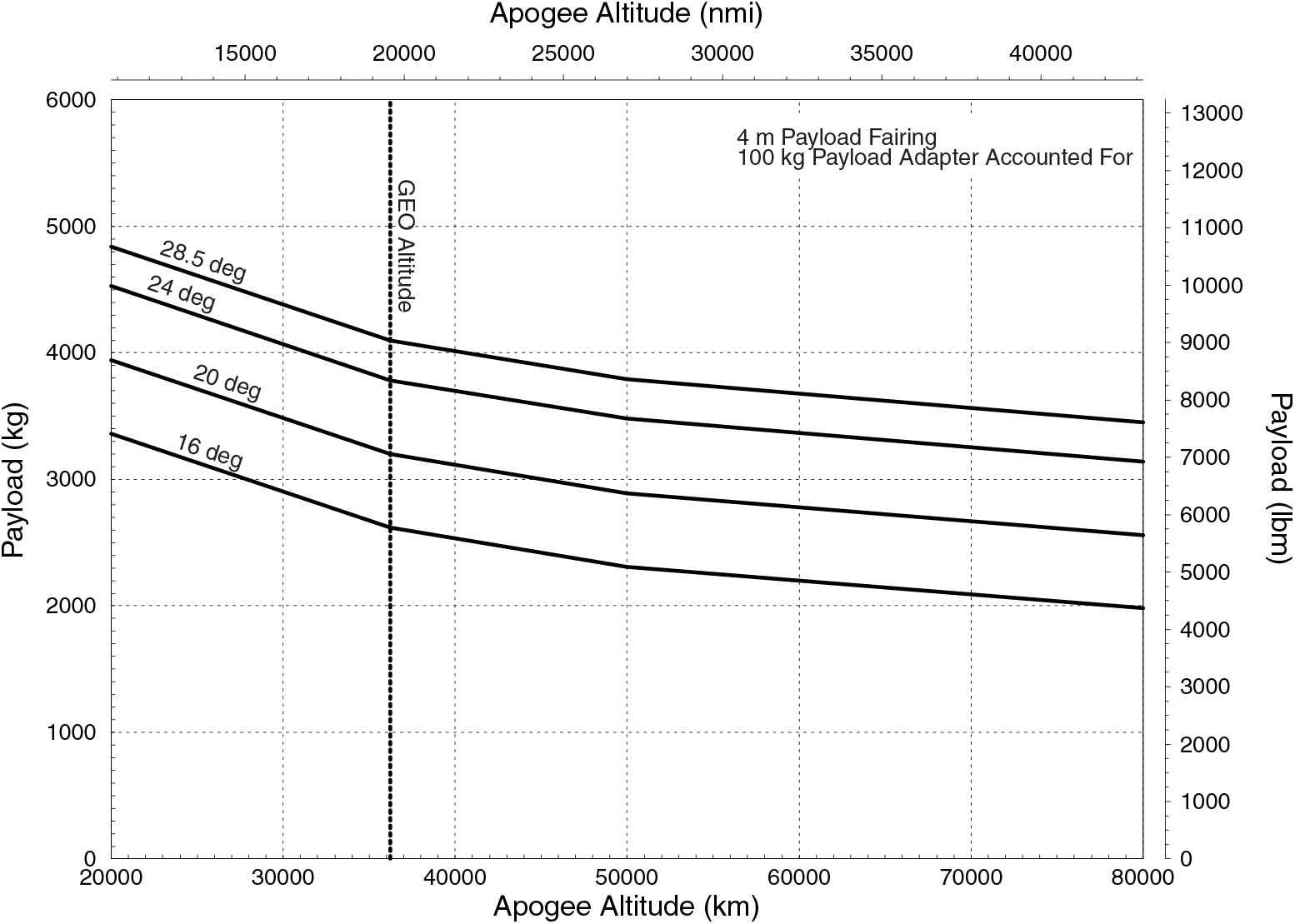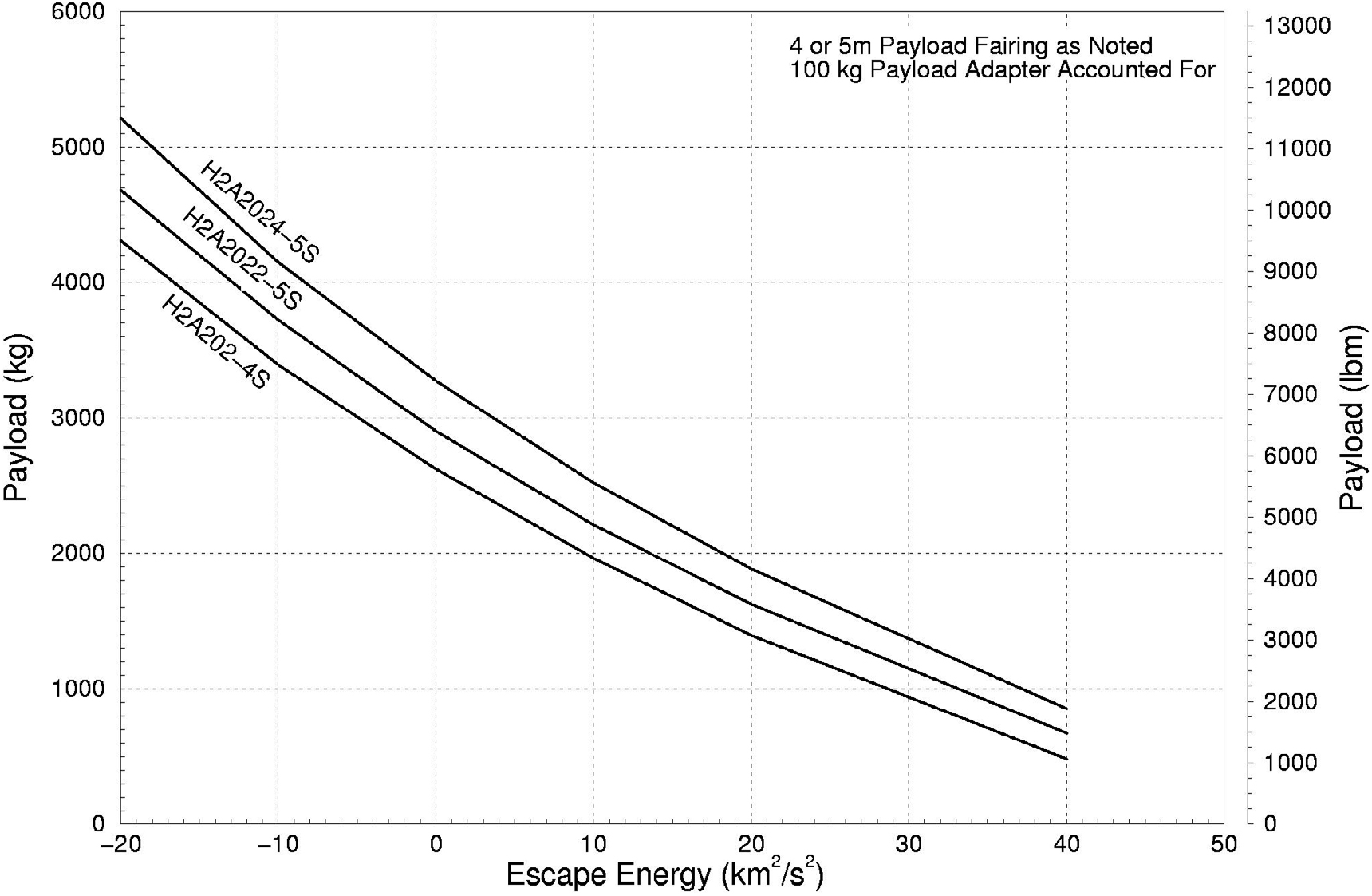H-IIA & H-IIB
Performance
The H-IIA is a flexible vehicle that can be used effectively for both GTO and LEO missions. The performance of the H-IIA can be tailored to the mission requirements by adding either two or four small solid strap-on boosters (SSBs). Each pair of SSBs increases GTO performance approximately 400–500 kg (900–1100 lbm). The typical GTO inclination for H-IIA launches is 28.5 deg, comparable to launches from Cape Canaveral. For LEO missions the H-IIA can deliver payloads to inclinations as high as sun-synchronous orbit. However, polar inclinations cannot be reached directly because of range safety concerns near Tanegashima. Instead, the launch vehicle must launch southeast, and then use a dogleg maneuver toward the southwest to reach the correct flight azimuth. During most of the year, the prevailing winds blow out to sea, but this is not the case in the summer. To prevent debris being blown back toward the launch site in the event of a failure, the H-IIA must make a wider turn, thus reducing performance for summer launches more than in winter. Launches to very low altitudes at 30.4 deg cannot be monitored continuously by tracking stations. Performance for this inclination is shown in the following charts assuming that this is acceptable to both the customer and JAXA.
The 4S fairing is assumed for the performance shown unless otherwise noted. Changing to a 5-m fairing (5S) reduces GTO performance roughly 300 kg (650 lbm). In the case of dual payload missions, the mass of the lower fairing assembly must be subtracted from the capability shown in the performance charts. A 100 kg (220 lbm) standard adapter is accounted for. If a different adapter is required, performance should be adjusted accordingly. Adapter masses range from 40 to 300 kg (90 to 650 lbm) depending on spacecraft size, mass, and interface requirements. The probability of command shutdown (PCS), which corresponds to the probability having sufficient performance to meet the specified orbit tolerance, is typically 99.7% or greater.
Initial flights of H-IIA have not been able to use a planned nozzle extension on the first stage engine and therefore performance has been lower than planned. (See Vehicle Design, Stage 1, for more information). The following performance graphs reflect capability with the long nozzle, which should be available by 2004. Performance to GTO with and without the nozzle extension is shown below for comparison purposes. Performance to the 800 km (432 nmi) sun-synchronous reference orbit is typically 100–200 kg (220–440 lbm) lower with the short nozzle.
Performance to 28.5 deg GTO
Short Nozzle | Long Nozzle | |
H-IIA 202 | 3700 kg (8157 lbm) | 4100 kg (9039 lbm) |
H-IIA 204 | 5800 kg (12,787 lbm) |

H2A202: LEO Performance

H2A202: GTO Performance

H-IIA Performance for Earth Escape Missions